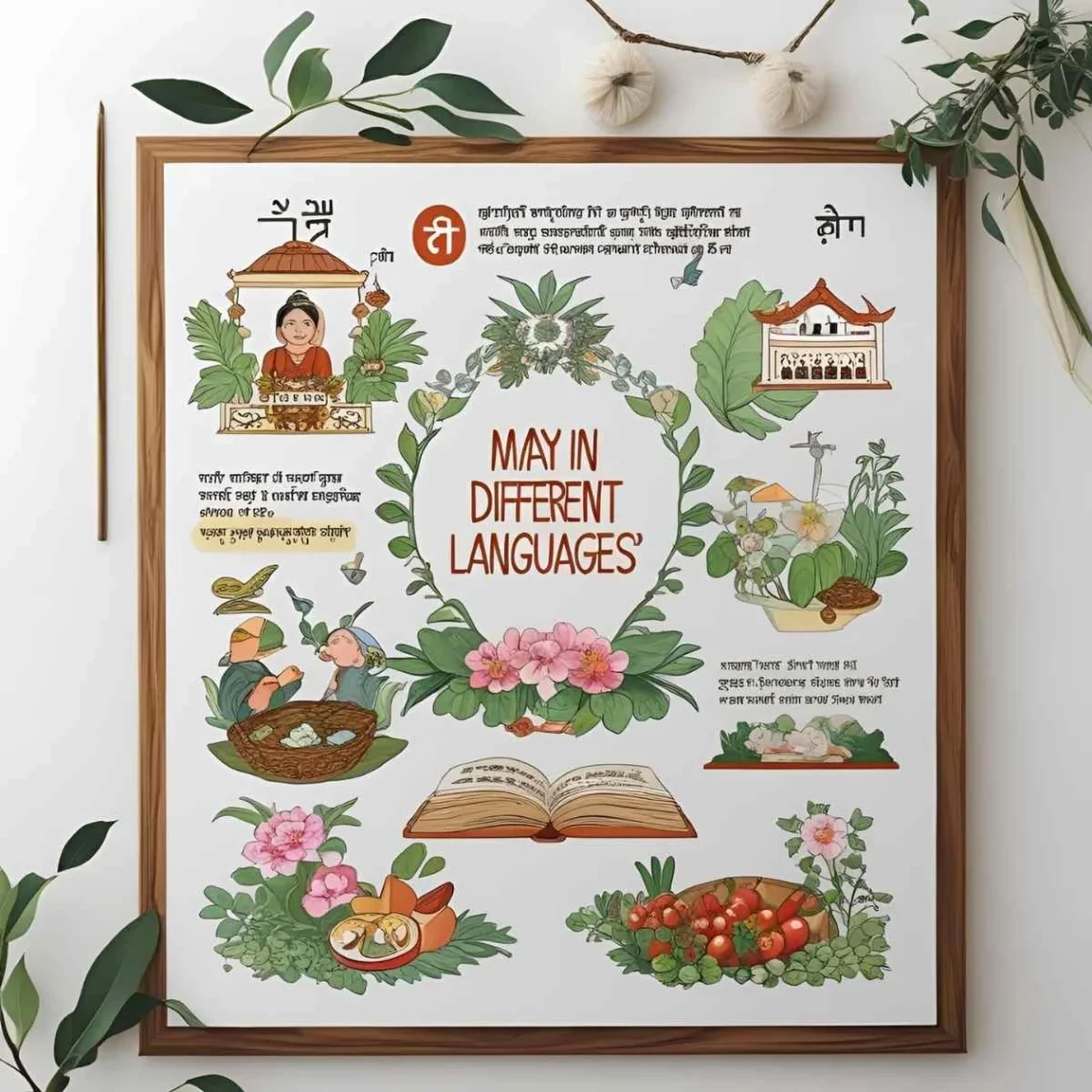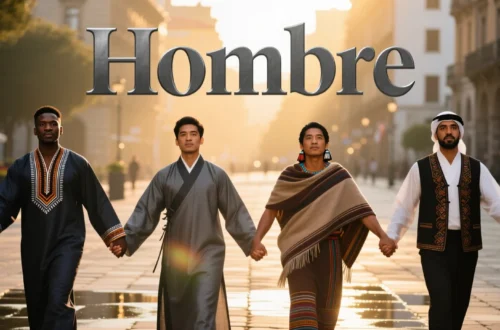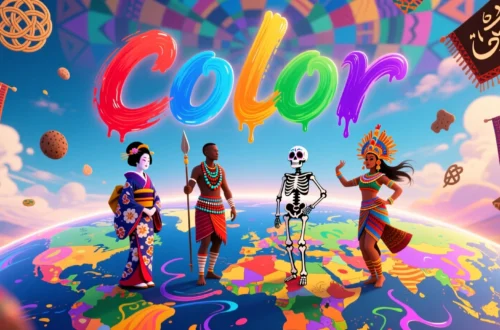Picture a moment in a bustling Athens market, where a vendor smiles and says “mporí” to suggest a deal might happen. That single word, “may,” carries a universal sense of possibility, opening doors to what could be.
Whether it’s a hopeful “quizás” in a Mexican cantina or a thoughtful “kanske” in a Stockholm café, the term for “may” reflects humanity’s shared optimism, shaped by cultural nuances.
Let’s embark on a global journey to explore how people express “may” in different languages and what these words reveal about their societies.
Reference Table: “May” in Different Languages
| Language | Word/Phrase | Cultural/Linguistic Insight |
|---|---|---|
| French | Peut-être | Literally “can be,” suggesting cautious optimism. |
| Spanish | Quizás | Means “perhaps,” used with a hopeful tone in Spain and Latin America. |
| Italian | Forse | Translates to “perhaps,” reflecting a reflective tone. |
| German | Vielleicht | Means “perhaps,” used in thoughtful or speculative contexts. |
| Mandarin | Kěnéng (可能) | Means “possible,” emphasizing practicality in agreement. |
| Hindi | Shāyad | Translates to “perhaps,” often used with emotional weight. |
| Japanese | Tabun (たぶん) | Means “probably” or “maybe,” used for cautious speculation. |
| Korean | Ama (아마) | Means “perhaps,” conveying a soft, tentative tone. |
| Arabic | Rubbamā (ربما) | Means “perhaps,” used across 20+ countries with a poetic flair. |
| Swahili | Labda | Means “maybe,” common in East Africa for open-ended plans. |
| Zulu | Mhlawumbe | Means “perhaps,” reflecting a hopeful tone in South Africa. |
| Yoruba | Bóyá | Means “maybe,” used with optimism in Nigeria. |
| Maori | Pea | Means “perhaps,” a simple term for possibility in New Zealand. |
| Hawaiian | Paha | Means “maybe,” tied to the relaxed aloha spirit. |
| Cherokee | Gohi | A term for “maybe,” used in Native American communities for possibility. |
European Languages: Possibility with Cultural Flair
European languages express “may” with terms that blend hope and caution. For instance, in French, “peut-être” (can be) conveys cautious optimism, often used in Paris cafés when plans are uncertain. Meanwhile, Spanish speakers say “quizás,” a hopeful term for “perhaps” heard across Spain and Latin America, often paired with a warm smile. Additionally, Italian uses “forse” (perhaps), which carries a reflective tone, as if weighing possibilities in a Roman piazza. In German, “vielleicht” (perhaps) is used in thoughtful discussions, reflecting Germany’s pragmatic approach to uncertainty. Thus, these terms balance optimism and careful consideration, shaped by Europe’s diverse cultural lenses.
Asian Languages: Harmony in Uncertainty
Asia’s linguistic diversity offers unique ways to say “may,” often tied to practicality or emotion. For example, in Mandarin, “kěnéng” (possible) emphasizes practicality, reflecting China’s focus on realistic outcomes. In Hindi, “shāyad” (perhaps) carries emotional weight, used in India’s vibrant markets to express hope. Similarly, Japanese uses “tabun” (probably), a cautious term for “maybe,” often heard in Tokyo to soften plans. In Korean, “ama” (perhaps) has a gentle, tentative tone, aligning with South Korea’s emphasis on emotional nuance. Finally, Arabic’s “rubbamā” (perhaps), used in over 20 countries like Egypt and Lebanon, adds a poetic touch, rooted in the region’s literary traditions. These terms highlight Asia’s range, from practical to emotive expressions of possibility.
African Languages: Possibility in Community
In African languages, “may” often reflects optimism and shared understanding. For instance, Swahili, spoken in over 20 countries like Kenya and Tanzania, uses “labda” (maybe), a versatile term for open-ended plans in social settings. In Zulu, “mhlawumbe” (perhaps) is a hopeful affirmation in South Africa, often shared with warmth. Similarly, Yoruba’s “bóyá” (maybe) in Nigeria conveys optimism, reflecting the culture’s communal positivity. These terms, used across diverse African contexts, emphasize possibility and hope, often celebrated in markets or gatherings.
Indigenous & Island Languages: Simple Expressions of Hope
Indigenous and island languages express “may” with simplicity and connection. For example, Maori in New Zealand uses “pea” (perhaps), a straightforward term reflecting the culture’s focus on harmony. In Hawaiian, “paha” (maybe) carries the relaxed spirit of aloha, used in warm discussions. Similarly, Cherokee’s “gohi” signifies possibility, used in Native American communities to express openness. In Samoan, phrases like “atoni” (maybe) reflect the Pacific’s communal approach, often used in group settings. Across these cultures, from New Zealand to the Cherokee Nation, “may” emphasizes hope and unity, often tied to shared traditions.
Cultural Insights: The Evolution of Possibility
Words for “may” have evolved with cultural attitudes toward uncertainty. For instance, Latin’s “fortasse” (perhaps, 1st century BCE) influenced Romance languages like French and Spanish. In Arabic, “rubbamā” traces back to poetic texts, symbolizing openness. Moreover, in African languages like Swahili, “labda” reflects trade-era flexibility, emphasizing adaptability. In Asia, terms like “kěnéng” and “tabun” align with philosophies of balance and caution, shaped by centuries of thought. These words carry histories of trade, literature, and cultural exchange, uniting people through shared expressions of possibility.
Proverbs and Sayings: Wisdom of Possibility
- French: “Peut-être que demain sera meilleur.” (Perhaps tomorrow will be better.) – Highlights hope in uncertainty.
- Hindi: “Shāyad sab kuch theek ho.” (Maybe everything will be fine.) – Reflects optimism in possibility.
- Swahili: “Labda kesho ni siku mpya.” (Maybe tomorrow is a new day.) – Ties possibility to renewal.
- Japanese: “Tabun, kokoro wa michi o mitsukeru.” (Perhaps the heart will find a way.) – Emphasizes emotional hope.
- Yoruba: “Bóyá, ayọ yoo wa.” (Maybe joy will come.) – Links possibility to happiness.
FAQs
Why do some words for “may” sound similar?
Shared linguistic roots (e.g., Romance languages) and cultural exchanges (e.g., Arabic’s influence on Swahili) create similarities.
What’s the oldest term for “may”?
Latin’s “fortasse” (circa 1st century BCE) is among the earliest, influencing modern Romance language terms.
How do cultures shape the term’s use?
Collectivist cultures (e.g., African, Indigenous) use “may” to foster group flexibility, while individualistic cultures (e.g., European) focus on personal possibility.
Conclusion
From “quizás” in Mexico to “labda” in Tanzania, the word for “may” weaves a global thread of hope and possibility. Each term, whether the cautious “tabun” in Japanese or the warm “pea” in Maori, reflects cultural values while celebrating our shared openness to what could be. Consequently, these words remind us that possibility unites all people, sparking optimism across borders. How do you say “may” in your language, and what possibilities does it inspire? Share your thoughts below—we’d love to hear your story!






